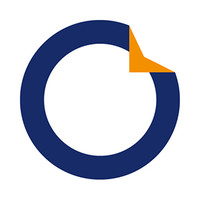Title Page
-
Conducted on
-
Prepared by
-
Location
-
-
Item
-
Requirement
-
Reference
-
How do you meet the requirement
-
Notes
6.0 PLANNING
6.1.2 Environmental Aspects
-
ISO 14001:2015
-
Section 6.1.2
-
Within the defined scope of the environmental management system, the organisation shall determine the environmental aspects of its activities, products and services that it can control and those that it can influence, and their associated environmental impacts, considering a life cycle perspective
-
ISO 14001:2015
-
Section 6.1.2
-
When determining environmental aspects, the organisation shall take into account:
-
a.) Change, including planned or new developments, and new or modified activities, products and services
-
b.) Abnormal conditions and reasonably foreseeable emergency situations
-
The organisation shall maintain documented information of its:
-
Environmental aspects and associated environmental impacts
-
Criteria used to determine its significant environmental aspects
-
Significant environmental aspects
-
ISO 14001:2015
-
Section 6.1.2
6.1.3 Determination of Legal Requirements and other Requirements
-
ISO 45001:2015 Section 6.1.3
-
The organisation shall establish, implement and maintain process(es) to:
-
ISO 45001:2015 Section 6.1.3
-
a.) Determine and have access to up-to-date legal requirements and other requirements that are applicable to its hazards, OH&S risks and OH&S Management System
-
b.) Determine how these legal requirements and other requirements apply to the organisation and what needs to be communicated
-
c.) Take these legal requirements and other requirements into account when establishing, implementing, maintaining and continually improving it OH&S Management System
-
ISO 45001:2015 Section 6.1.3
6.1.3 Compliance Obligations
-
ISO 14001:2015 Section 6.1.3
-
The organisation shall:
-
ISO 14001:2015 Section 6.1.3
-
a.) Determine and have access to the compliance obligations related to its environmental aspects
-
b.) Determine how these compliance obligations apply to the organisation
-
c.) Take these compliance obligations into account when establishing, implementing, maintaining and continually improving its environmental management system
-
The organisation shall maintain documented information of its compliance obligations
-
ISO 14001:2015 Section 6.1.3
8.0 OPERATION
8.2 Requirements for Products and Services
-
ISO 9001:2015 Section 8.2, 8.2.1, 8.2.2, 8.2.3, 8.2.4
8.2.1 Customer Communication
-
ISO 9001:2015 Section 8.2, 8.2.1, 8.2.2, 8.2.3, 8.2.4
-
Communication with customers shall include:
-
a.) Providing information relating to products and services
-
b.) Handling enquiries, contracts or orders, including changes
-
c.) Obtaining customer feedback relating to products and services, including customer complaints
-
d.) Handling or controlling customer property
-
e.) Establish specific requirements for contingency actions, when relevant
-
ISO 9001:2015 Section 8.2, 8.2.1, 8.2.2, 8.2.3, 8.2.4
8.2.2 Determining the Requirements for Products and Services
-
ISO 9001:2015 Section 8.2, 8.2.1, 8.2.2, 8.2.3, 8.2.4
-
When determining the requirements for the products and services to be offered to customers, the organisation shall ensure that:
-
a.) The requirements for the products and services defined, including:
-
1.) any applicable statutory and regulatory requirements
-
2.) those considered necessary by the organisation
-
b.) The organisation can meet the claims for the products and services it offers
-
ISO 9001:2015 Section 8.2, 8.2.1, 8.2.2, 8.2.3, 8.2.4
8.2.3 Review the Requirements for Products and Services
-
ISO 9001:2015 Section 8.2, 8.2.1, 8.2.2, 8.2.3, 8.2.4
-
8.2.3.1 The organisation shall ensure that it has the ability to meet the requirements for the products and services to be offered to customers. The organisation shall conduct a review before committing to supply products and services to a customer, to include:
-
ISO 9001:2015 Section 8.2, 8.2.1, 8.2.2, 8.2.3, 8.2.4
-
a.) Requirements specified by the customer, including the requirements for delivery and post-delivery requirements
-
b.) Requirements not stated by the customer, but necessary for the specified or intended use, when known
-
c.) Requirements specified by the organisation
-
d.) Statutory and regulatory requirements applicable to the products and services
-
e.) Contract or order requirements differing from those previously expressed
-
The customers requirements shall be confirmed by the organisation before acceptance, when the customer does not provide a documented statement of their requirements
-
ISO 9001:2015 Section 8.2, 8.2.1, 8.2.2, 8.2.3, 8.2.4
-
8.2.3.2 The organisation shall retain documented information, as applicable:
-
ISO 9001:2015 Section 8.2, 8.2.1, 8.2.2, 8.2.3, 8.2.4
-
a.) on the results of the review
-
b.) on any new requirements for the products and services
-
ISO 9001:2015 Section 8.2, 8.2.1, 8.2.2, 8.2.3, 8.2.4
8.2.4 Changes to Requirements for Products and Services:
-
ISO 9001:2015 Section 8.2, 8.2.1, 8.2.2, 8.2.3, 8.2.4
-
The organisation shall ensure that relevant documented information is amended, and that relevant persons are made aware of the changed requirements, when the requirements for products and services are changed
-
ISO 9001:2015 Section 8.2, 8.2.1, 8.2.2, 8.2.3, 8.2.4
8.3.2 Design and Development Planning
-
ISO 9001:2015 Section 8.3.2, 8.3.4, 8.3.5 & 8.3.6
-
In determining the stages and controls for design and development, the organisation shall consider:
-
a.) the nature, duration and complexity of the design and development activities
-
b.) the required process stages, including applicable design and development reviews
-
c.) the required design and development verification and validation activities
-
d.) the responsibilities and authorities involved in the design development process
-
e.) the internal and external resource needs for the design and development of products and services
-
f.) the need to control interfaces between persons involved in the design and development process
-
g.) the need for involvement of customers and users in the design and development process
-
h.) the requirements for subsequent provision of products and services
-
i.) the level of control expected for the design and development process by customers and other relevant interested parties
-
j.) the documented information needed to demonstrate that design and development requirements have been met
-
ISO 9001:2015 Section 8.3.2, 8.3.4, 8.3.5 & 8.3.6
8.3.4 Design and Development Controls
-
ISO 9001:2015 Section 8.3.2, 8.3.4, 8.3.5 & 8.3.6
-
The organisation shall apply controls to the design and development process to ensure that:
-
a.) the results to be achieved are defined
-
b.) reviews are conducted to evaluate the ability of the results of the design and development to meet requirements
-
c.) verification activities are conducted to ensure that the design and development outputs meet the input requirements
-
d.) validation activities are conducted to ensure that the resulting products and services meet the requirements for the specified application or intended use
-
e.) any necessary actions are taken on problems determined during the reviews, or verification and validation activities
-
f.) documented information of these activities are retained
-
ISO 9001:2015 Section 8.3.2, 8.3.4, 8.3.5 & 8.3.6
8.3.5 Design and Development Outputs
-
ISO 9001:2015 Section 8.3.2, 8.3.4, 8.3.5 & 8.3.6
-
The organisation shall ensure that design and development outputs:
-
a.) meet input requirements
-
b.) are adequate for the subsequent processes for the provision of products and services
-
c.) include of reference monitoring and measurement requirements, as appropriate, and acceptable criteria
-
d.) specify the characteristics of the products and services that are essential for their intended purpose and their safe and proper provision
-
The organisation shall retain documented information on design and development outputs
-
ISO 9001:2015 Section 8.3.2, 8.3.4, 8.3.5 & 8.3.6
8.3.6 Design and Development Changes
-
ISO 9001:2015 Section 8.3.2, 8.3.4, 8.3.5 & 8.3.6
-
The organisation shall identify, review and control changes made during, or subsequent to, the design and development of products and services, to the extent necessary to ensure that there is no adverse impact on conformity to requirements
-
The organisation shall retain documented information on:
-
a.) design and development changes
-
b.) the results of reviews
-
c.) the authorisation of the changes
-
d.) the actions taken to prevent adverse impacts
-
ISO 9001:2015 Section 8.3.2, 8.3.4, 8.3.5 & 8.3.6
9.0 PERFORMANCE EVALUATION
9.1.2 Evaluation of Compliance
-
45001:2015 Section 9.1.2
-
The organisation shall establish, implement and maintain the process(es) needed to evaluate fulfilment of its compliance obligations:
-
a.) determine the frequency that compliance will be evaluated
-
b.) evaluate compliance and take action if needed
-
c.) maintain knowledge and understanding of compliance status
-
d.) retain documented information of the compliance evaluation result(s)
-
45001:2015 Section 9.1.2
9.1.2 Customer Satisfaction
-
ISO 9001:2015 Section 9.1.2
-
The organisation shall monitor customers perceptions of the degree to which their needs and expectations have been fulfilled. The organisation shall determine the methods for obtaining, monitoring and reviewing this information
-
ISO 9001:2015 Section 9.1.2
9.1.3 Analysis and Evaluation
-
ISO 9001:2015 Section 9.1.3
-
The organisation shall analyse and evaluate appropriate data and information arising from monitoring and measurement. The results of analysis shall be used to evaluate:
-
a.) conformity of products and services
-
b.) the degree of customer satisfaction
-
c.) the performance an effectiveness of the quality management system
-
d.) if planning has been implemented effectively
-
e.) the effectiveness of actions taken to address risks and opportunities
-
f.) the performance of external providers
-
g.) the need for improvements to the quality management system
-
ISO 9001:2015 Section 9.1.3
9.2 Internal Audit
-
ISO 9001:2015 ISO 14001:2015 ISO 45001:2015 Section 9.2, 9.2.1 & 9.2.2
9.2.1 General
-
ISO 9001:2015 ISO 14001:2015 ISO 45001:2015 Section 9.2, 9.2.1 & 9.2.2
-
The organisation shall conduct internal audits at planned intervals to provide information on whether the Quality, Environmental & OH&S Management System conforms to:
-
a.) conforms to:
-
1.) the organisations own requirements for its Quality, Environmental, OH&S management system, including policies & objectives
-
2.) the requirements of the international standard
-
b.) is effectively implemented
-
ISO 9001:2015 ISO 14001:2015 ISO 45001:2015 Section 9.2, 9.2.1 & 9.2.2
9.2.2 Internal Audit Programme
-
ISO 9001:2015 ISO 14001:2015 ISO 45001:2015 Section 9.2, 9.2.1 & 9.2.2
-
The organisation shall:
-
a.) plan, establish, implement and maintain audit programme(s) including the frequency, methods, responsibilities, planning requirements and reporting, which shall take into consideration the importance of the processes concerned, changes affecting the organisation, and the results of previous audits
-
b.) define the audit criteria
-
c.) select auditors and conduct audits to ensure objectivity and the impartiality of the audit process
-
d.) ensure that the results of the audit are reported to relevant management
-
e.) take appropriate correction and corrective actions without undue delay
-
f.) retain documented information as evidence of the implementation of the audit programme and audit results
-
ISO 9001:2015 ISO 14001:2015 ISO 45001:2015 Section 9.2, 9.2.1 & 9.2.2
10.0 IMPROVEMENT
10.2 Incident, Nonconformity and Corrective Actions
-
ISO 45001:2018 Section 10.2
-
The organisation shall establish, implement and maintain process(es), including reporting, investigating and taking action, to determine and manage incidents and nonconformities
-
When an incident or nonconformity occurs, the organisation shall:
-
a.) react in a timely manner to the incident or nonconformity and, as applicable
-
1.) take action to control and correct it
-
2.) deal with the consequences
-
b.) evaluate with the participation of workers and the involvement of other relevant interested parties, the need for corrective action to eliminate the root cause(s) of the incident or nonconformity, in order that it does not recur or occur elsewhere by:
-
1.) investigating the incident or reviewing the nonconformity
-
2.) determining the cause(s) of the incident or nonconformity
-
3.) determining if similar incidents have occurred, if nonconformities exist, or if they could potentially occur
-
c.) review existing assessments of OH&S risks and other risks as appropriate
-
d.) determine and implement and action needed, including corrective action, in accordance with the hierarchy of controls and management of change
-
e.) assess OH&S risks that relate to new or changed hazards, prior to taking action
-
f.) review the effectiveness of any actions taken, including corrective action
-
g.) make changes to the OH&S management system, if necessary
-
The organisation shall retain documented information and shall communicate the documented information to relevant workers, and, where they exist, workers representatives, and other interested parties
-
ISO 45001:2018 Section 10.2
10.2 Nonconformity and Corrective Actions
-
ISO 9001:2015 ISO 14001:2015 Section 10.2
-
When a nonconformity occurs, including an arising from complaints, the organisation shall:
-
a.) react to the nonconformity and, as applicable
-
1.) take action to control and correct it
-
2.) deal with the consequences
-
b.) evaluate the need for action to eliminate the cause(s) of the nonconformity, in order that it does not recur or occur elsewhere by
-
1.) reviewing and analysing the nonconformity
-
2.) determining the cause(s) of the nonconformity
-
3.) determining if similar nonconformities exist, or if they could potentially occur
-
c.) implement any action needed
-
d.) review the effectiveness of any corrective action taken
-
e.) update risks and opportunities determined during planning, if necessary
-
f.) make changes to the quality / environmental system, if necessary
-
The organisation shall retain documented information as evidence of:
-
The nature of the nonconformities and any subsequent actions taken
-
The results of any corrective action
-
ISO 9001:2015 ISO 14001:2015 Section 10.2
10.3 Continual Improvement
-
ISO 9001:2015 ISO 14001:2015 Section 10.3
-
The organisation shall continually improve the suitability, adequacy and effectiveness of the quality / environmental management system
-
ISO 9001:2015 ISO 14001:2015 Section 10.3
10.3 Continual Improvement
-
ISO 45001:2015 Section 10.3
-
The organisation shall continually improve the suitability, adequacy and effectiveness of the OH&S management system by:
-
a.) enhance OH&S performance
-
b.) promoting a culture that supports an OH&S management system
-
c.) promoting the participation of workers in implementing actions for continual improvement
-
d.) communicating the relevant results of continual improvement to workers and, where they exist worker representatives
-
e.) maintaining and retaining documented information as evidence of continual improvement
-
ISO 45001:2015 Section 10.3
Control of Noise at Work
-
Control of Noise at Work Regulations 2005
-
The organisation shall demonstrate that is has the appropriate processes in place:
-
a.) What training is in place to educate all employees of the effect of noise at work?
-
b.) What PPE is available?
-
c.) Is the organisation aware of the legal limits, and are these monitored?
-
d.) Is a health surveillance carried out?
-
Control of Noise at Work Regulations 2005
Control of Vibration at Work
-
Control of Vibration at Work Regulations 2005
-
The organisation shall implement the following:
-
a.) A Risk Assessment is in place for the use of vibrating tools and or Equipment
-
b.) Vibrating tools are monitored
-
c.) The correct PPE is available for using vibrating tools and equipment
-
d.) instruction / training on the correct use has been performed
-
e.) Regular health surveillance is carried out
-
f.) The employees are aware of the hazards, risks of prolonged use of vibrating tools or equipment
-
Control of Vibration at Work Regulations 2005
Consultation with Employees
-
Consultation with Employees Regulations 1996
-
The organisation shall consult with employees / Health & Safety representatives on:
-
a.) The introduction of any measure which may affect their health and safety at work (new equipment or systems of work)
-
b.) arrangements for getting competent people to help them comply with Health & Safety regulations
-
c.) information detailing the risks and dangers arising from their work and the measure to reduce or get rid of these risks
d.) the planning and organisation of Health & Safety training
-
Consultation with Employees Regulations 1996
Safety Signs and Signals
-
Safety Signs and Signals Regulations 1996
-
The organisation shall ensure that safety signs are provided (or are in place) and maintained in circumstances where there is a significant risk to health and safety that has not been removed or controlled by other methods
-
Safety signs must be secured in the appropriate location, convey a clear message and are maintained
-
Safety Signs and Signals Regulations 1996
Regulatory Reform (Fire Safety)
-
Regulatory Reform (Fire Safety) Order 2005
Risk Assessment
-
1.) the organisation must make a suitable and sufficient assessment of the risks to which employees are exposed for the purpose of identifying the general fire precautions they need to take to comply with the requirements
-
2.) where a dangerous substance is or is liable to be present in or on the premises, the risk assessment must include consideration
-
3.) any such assessment is reviewed by the responsible person regularly to keep it up to date
Fire Fighting & Detection
-
1.) in order to safeguard employees, the organisation shall ensure that the premises are equipped with appropriate fire fighting equipment and with fire detectors and alarms
-
2.) nominate competent persons to implement fire fighting measures and ensure that the number of such persons, their training and the equipment available to them are adequate
-
3.) arrange the necessary contacts with external emergency services, particularly as regards, fire fighting, rescue work, first aid and emergency medical care
-
Regulatory Reform (Fire Safety) Order 2005
Work Time Regulations
-
Work Time Regulations 1998
-
How does the organisation ensure that it is:
-
a.) Compliant with the working time Regulation?
-
b.) That all employees are aware of the maximum working time allowance?
-
c.) How is it cascaded / distributed to the workforce, and ensured it is understood?
-
Work Time Regulations 1998
Radiation
-
The Ionising Radiation Regulations 1999
-
Does the organisation have the following:
-
a.) A Radiation Protection Advisor (RPA)
-
b.) Trained users for any radiation emitting equipment?
-
c.) A designated area and procedure for the use of ionising radiation equipment?
-
d.) Monitor users who are exposed? Do you have dosimeter devices to do this?
-
e.) Appropriate PPE available?
-
f.) Continually assess the risks of exposure to ionising radiation? [show]
-
The Ionising Radiation Regulations 1999
Planned Maintenance
-
a.) Does the organisation have a Maintenance Schedule?
-
b.) What does this cover?
-
c.) How often and to what frequency is the Maintenance schedule reviewed?
-
d.) Who carries out Maintenance, are they suitably qualified?
-
e.) What is the process for something that has failed routine maintenance check?















